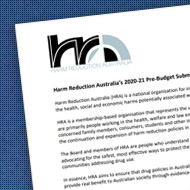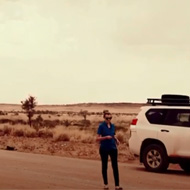The Pharmacy Guild’s pre-budget submission, titled Improving patient access to health care through community pharmacies, seeks to improve access to health care for patients through the establishment and funding of a national opioid dependence treatment (ODT) program, as well as by enhancing patient safety and minimising medication errors by supporting eligible pharmacies with the national roll-out of electronic prescriptions.
In the article below, addiction medicine pharmacist and former National Councillor of the Pharmacy Guild of Australia. Angelo Pricolo, writes about a friend and patient who was stable on his methadone treatment, helping kids in sport and active in preventive health … but then stigma reared its ugly head.
No doubt the most important relationship I have forged over my career in pharmacy has been with Fabian. A friend, a confident and a patient, Fab has taught me lots of things and I might have saved his life along the way.
Fab tells the story of the first time we met, some of the detail I had forgotten. The main element for him was my shaking his hand to welcome him onto my methadone program. A program or pharmacotherapy to help reduce his heroin use and re-establish his credentials as a member of the mainstream world.
Subjected to stigma or, as patients often describe it, “feeling everyone’s eyes are on you” is a lonely place to be. When you already have a heightened sense of your surroundings, a paranoid feeling descends so that even a glance or a throwaway line can make you feel very uncomfortable.
A welcoming gesture goes a long way. It also sends a clear message to onlookers… Fab’s ok.
On the other hand, when you have a bad start and tension mounts, eventually you tend to part ways, sometimes on unpleasant terms. This can happen with any customer or relationship, but it is dangerous if it happens when you are taking a replacement drug that is keeping you away from an illegal, hazardous lifestyle.
This breakdown is possibly a failure by you to engage. The opposite of engaging in this scenario is pushing people away and back to risky drug use.
Fab reflects that the handshake was singularly the most important part of our first meeting for him. For me the handshake displayed respect and commitment to his wellbeing rather than make any other attempt to show authority and demand his respect. Besides, he was so big, imposing myself on him was pretty useless anyway.
Now what I remember vividly was the size of that right hand when we shook. My hand disappeared into his and I thought he was going to crush it. Turned out this gentle giant barely tightened his grip, maybe he was scared he would break my fingers.
I was to find out much later that Fab was a very promising heavyweight-boxing champion with a Victorian title under his belt and an Australian one well within his sights. He also had a black belt in karate and was undefeated in six professional boxing bouts. But when he first visited me at the pharmacy it was just starting to unravel.
When someone has a relationship with heroin, most other parts of their life become less important. I remember Fab saying, “You use heroin, and you continue to use heroin until you lose enough.” He was beginning to lose things that were precious to him.
Fab was making coffee at a little bar in Lygon Street in Melbourne’s Italian quarter and he was comfortable but not content. His passion was boxing and although he was a natural behind the coffee machine, he was happiest in the ring.
A mate of mine, Luke Mitchell, who worked in Juvenile Justice, let us know about an old boxing gym that was once frequented by boxing royalty and had fallen from grace. It was called Fitzroy Stars and was a hot spot for young indigenous boxers but not very popular anymore. They were looking for a trainer.
They wanted a trainer that could breathe new life into a sweaty basement gym and I just thought the planets had lined up for my friend. I couldn’t get him down there quick enough and blab his credentials all over the place. As it turned out, nobody wanted the unpaid job in a smelly, rundown shell. Fab started the next day.
Having always been interested in boxing, growing up listening to Dad’s stories of former greats, I took the opportunity to start hanging around the gym after work. For weeks it was me, Fab and a couple of kids with the whole place to ourselves. It was very slow. I started to move around the ring a bit with Fab and learn how to throw a punch without hurting myself.
What always intrigued me was just how hard it was to land a punch on Fab. Yet, even in slow motion he could tap me on the chin at will. He had the moves and I was a sitting duck. Lucky we were friends.
People slowly, almost reluctantly, started to come down to the gym. Another trainer asked if he could coach his charger and share the ring. He was training a girl who was due for her second amateur fight very soon. She attracted more girls and then even a few young kids turned up with tentative parents.
In the mix, Fab noticed a real prospect. A young indigenous fighter, Sharc (that’s what everyone called him) who moved smoothly, was rather quiet but very smart on his feet. As good as he was, he was only interested in boxing to get fit for footy season. Fab had other ideas.
After a while learning the basics we visited a couple of neighbouring gyms to try some friendly sparring sessions for Sharc. Within a few months he was challenging fighters that had already fought several times so it was obvious he was ready for his first test, an amateur fight.
Now one thing I’ve always fantasised could be my ticket to a Las Vegas career was being in a boxer’s corner as the cut-man. Here was my break; I was the obvious choice, in fact the only choice. I was to walk into the ring with Fab and his amateur novice and hope there was no blood.
The fight world is really another world altogether if you haven’t been involved. Everyone seemed to know the main guys and I was just a fish out water. I felt like a polo player at an ice-hockey game.
Not much has changed for the cut-man in boxing for a long time. The tools of the trade are a small metal iron; some call a no-swell iron, used to push fluid around so the skin doesn’t burst. And petroleum jelly impregnated with adrenaline to curb bleeding in case the skin does break. It also has the quality of helping the boxing gloves glide over the skin and generate less friction.
In three rounds of a three-minute duration fight I hoped I would need neither and as it turned out the fight went to plan. Fab got his first win as a coach by a unanimous points decision and there were no cuts. I had survived my first fight.
Everything was progressing well. More boxers were joining the gym, Fab was getting really popular and Sharc was getting stronger, faster and learning to throw penetrating combinations while dodging opponents. But then life took a turn for Fab. His past caught up with him and he needed to face the music.
A two-year-old charge was due in court and even though Fab was stable, employed and doing well by any measure, he had to appear. I had been invited to do a talk in New Zealand about addiction and Fab was coming to give his first-hand account. It was always very powerful when he spoke, people really listened.
With a court case pending he had to request permission to leave Australia so there was a hearing with a judge. The judge quickly granted the request and added she felt that with his good record and no priors he really had nothing to answer to and the charge should just be dropped.
It wasn’t, but we still went to New Zealand with the judge’s vote of confidence.
When we got back all attention was focused on Sharc and he was booked in for his second fight. This time he was a known quantity and so the matchup was set to be more challenging. The date was set; it was two days after the re-scheduled court case.
Fab was a bit nervous and started hinting that I might have to take over on fight day if things didn’t go well. I was comfortable with the judge’s assessment before the New Zealand trip so didn’t even consider that option.
I should have. The legal system comes down to one person’s interpretation and the judge at the hearing was not friendly from the outset. I gave evidence and talked about how well Fab was doing, his participation in many talks that helped young people understand the hazards associated with drug use and how stable his methadone treatment was.
Well I should never have mentioned methadone. It was like a red flag to a bull. The judge immediately cut in and said, “Well that’s no good if you are still taking the methadone.”
With that, everything was settled, and nothing I said would change the fact that Fab was going to jail for the first time in his life. It was only a three-month sentence, but that judge had a devastating effect on Fab’s future in so many ways.
Addiction is a chronic relapsing disease. That means relapse is part of the condition and when you revisit heroin the damage can be catastrophic. It made it difficult to maintain a friendship because going off the rails was hard for a cleanskin like me to cope with, let alone for him.
It was also one of the reasons, especially at the start of becoming friends, I found myself perplexed and unsure if I was crossing the line. Maybe I did. But Fab never made me feel like that it was just my analysis of the situation.
I visited Fab a couple of times and that was an experience in itself. Jail is not a fun place. He was in good spirit though and took the time to get seriously into shape. Jails love boxers, especially big ones. He lost weight, trained himself and other inmates and came out three months later looking like he could get back into the ring himself. But he didn’t. He started using again.
What followed was a tumultuous period where Fab lost the coffee shop job that had been held for him, and he almost lost the gym. He eventually got back to coaching but the trust factor was gone and a series of events lead to an inevitable bad ending at the gym too.
It took Fab a long time to accept the consequences and although he quickly re-joined the methadone program the damage had been done. He churned through a few jobs and houses but eventually settled again and I have no doubt that if he hadn’t got back onto methadone he would have either been back in jail or worse.
Fab always says it came down to that first handshake. It was a welcoming gesture that made it easier to return even after an inevitable relapse, even after society turned on him and judged him for his condition.
But what about Sharc? Well Sharc had his second fight with just me in his corner and was again victorious maintaining a 100% record for himself and also handing me a perfect training record in my one and only bout (and thankfully, again, no blood). He went back to football after that fight, even faster and very fit.
Fab was suitably impressed and asked what advice I gave him from the corner. I was proud of what I could confidently offer. I said “Hit him in the head.”
This article first appeared in AJP.
The Guild’s pre-Budget submission can be accessed here.


